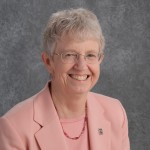
In a last minute push, the Alaska Legislature passed funding for schools over the weekend. They passed SB 182, an education package and SB 160 – the capital budget. Together, they provide more than $100 million in funding for districts across the state.
The legislature passed what they’re calling an ‘omnibus’ bill that provides one-time funding for specific education projects, plus the capital budget, which includes some education funding. In total, the bills provide about $111 million for programs from bussing to vocational education, plus relieve local communities of some of their funding obligations. That’s something Carl Rose, the Executive Director of the Association of Alaska School Boards, says he’s mostly pleased about.
“That is a significant investment that late in the session and I was extremely pleased. Did we get everything we wanted? No. Did we get it the way we wanted? No. Did we get it when we wanted? No,” Rose said.
Rose says he would have preferred an increase to the base student allocation — the per-pupil rate of $5,680 used in a complex funding formula — something his organization had been pushing for. The BSA is recurring money that can be used flexibly by districts. Rose says the big worry is that the funding the legislature approved does not give districts the opportunity to build their budgets into the future.
“The biggest concern I have is that we can’t depend on these monies on a regular basis because their outside the foundation formula, the base student allocation,” Rose said.
But Carol Comeau, the Superintendent for the state’s largest district in Anchorage says she’ll take what she can get. And the funding translates into some helpful increases for her district.
“One of the things that we’re very excited about they did was increase pupil transportation funding for this school year to help us with costs already and then going forward. Another exciting thing they did was increase the voc-ed career and technical education factor by about 50 percent. And then apparently they put some money outside the formula one-time costs, and whatever our amount is we’ll be able to use it flexibly as I understand it,” Comeau said.
Comeau says if her district is creative, she’s hopeful the new funding will allow them to reinstate some cuts made back in January. But Barb Angaik, the President of the National Education Association of Alaska is doubtful because most of the money comes allocated for specific projects.
“The allocations that came out of the legislature this year is very specific. Some of the funding is very specific — for example pupil transportation is money that is allocated for that specific purpose. The career tech, we are very grateful for that money, but it can only be allocated for those types of programs,” she said.
Angiak says the new funding does not address some core problems districts are dealing with. And there will still be teacher and program cuts and larger class sizes in many districts across the state. How those cuts are made over the next few months, Angiak says is something parents should be paying attention to.
“And if parents and community members are concerned about that, they ought to be focused on making sure that the districts are taking a very, very careful look at where cuts are gonna be made to make sure that the direct impact to the students is minimum,” Angiak said.
The Governor has 20 days from when the bills land on his desk to make changes. He could still use his line-item veto power. The money will likely be delivered to districts and budgets finalized, sometime in June.
Daysha Eaton is a contributor with the Alaska Public Radio Network.
Daysha Eaton holds a B.A. from Evergreen State College, and a M.A. from the University of Southern California. Daysha got her start in radio at Seattle public radio stations, KPLU and KUOW. Before coming to KBBI, she was the News Director at KYUK in Bethel. She has also worked as the Southcentral Reporter for KSKA in Anchorage.
Daysha's work has appeared on NPR's "Morning Edition" and "All Things Considered", PRI's "The World" and "National Native News". She's happy to take assignments, and to get news tips, which are best sent via email.
Daysha became a journalist because she believes in the power of storytelling. Stories connect us and they help us make sense of our world. They shed light on injustice and they comfort us in troubled times. She got into public broadcasting because it seems to fulfill the intention of the 4th Estate and to most effectively apply the freedom of the press granted to us through the Constitution. She feels that public radio has a special way of moving people emotionally through sound, taking them to remote places, introducing them to people they would not otherwise meet and compelling them to think about issues they might ordinarily overlook.




